Mem's Journey to Scotland
Wednesday morning, Helen drove us back up through the Highlands, towards the North of mainland Scotland. As we passed valleys and rolling hills, Helen pointed out the lumps, bumps and glens which were created by glaciers during the ice age. You could see clearly the places where deposits were left as the ice retreated, and the deep rifts where it carved its way through. We passed numerous rainbows, one of them a double rainbow, both reflected onto themselves and into the water. I’m beginning to see the connection between rainbows and unicorns, due to the vast number of both seen here in Scotland.
After several hours on the road, we made it to John O’Groats; the most northerly point of the mainland. Orkney was visible across the ocean, and we were surrounded by circling gulls and a sign pointing the distance from here to many miles away. There was also a curved sculpture, a reference to the giant boulders which are known to sit in the ocean bed there, in one of the fastest currents in the world. A little leg stretch, some obligatory photos, and off we went to Gills Bay, to catch the ferry.
The ferry arrived a little late, and
Mem Davis
36 chapters
16 Apr 2020
19th - 20th October
October 23, 2016
|
Orkney
Wednesday morning, Helen drove us back up through the Highlands, towards the North of mainland Scotland. As we passed valleys and rolling hills, Helen pointed out the lumps, bumps and glens which were created by glaciers during the ice age. You could see clearly the places where deposits were left as the ice retreated, and the deep rifts where it carved its way through. We passed numerous rainbows, one of them a double rainbow, both reflected onto themselves and into the water. I’m beginning to see the connection between rainbows and unicorns, due to the vast number of both seen here in Scotland.
After several hours on the road, we made it to John O’Groats; the most northerly point of the mainland. Orkney was visible across the ocean, and we were surrounded by circling gulls and a sign pointing the distance from here to many miles away. There was also a curved sculpture, a reference to the giant boulders which are known to sit in the ocean bed there, in one of the fastest currents in the world. A little leg stretch, some obligatory photos, and off we went to Gills Bay, to catch the ferry.
The ferry arrived a little late, and

we got fantastically lost on the way to our caravan. Although we needed to find our accommodation, we stopped on the side of a road to look up at the sky.
In Orkney there are no trees, and there is no light pollution. There was an unobstructed view of the stars and milky way, and we watched it for so long I got dizzy from looking skyward. We saw shooting stars and a satellite. The moon was almost full. It hung large and low, reflecting twice into the loch below. We arrived late, to a warm welcome and a bottle of homemade apple wine, and settled into our musky pink, floral, static caravan, circa 1990.
We began Thursday with a walk from the Ring of Brodgar. This stone circle is a massive 104 metres in diameter, and is surrounded by a ditch almost 10 metres wide. It’s nearly a perfect circle, and the size of the stones makes you wonder just how on earth it was built.
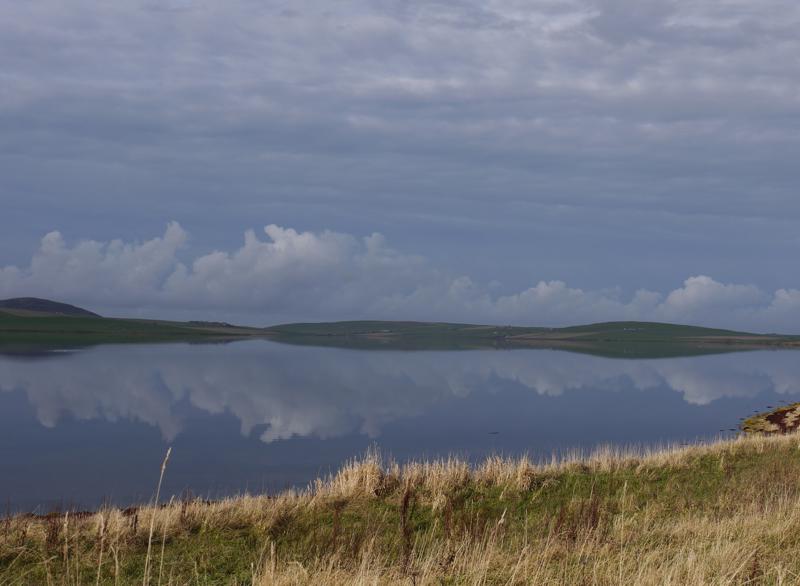

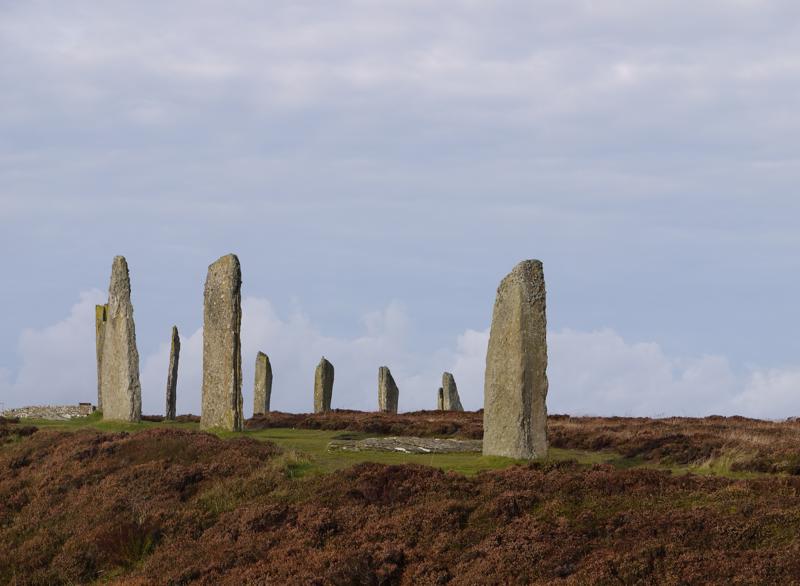

Theory goes that it was used in Neolithic times for public feasts and commemorations. One of the stones is broken as a result of a lightning strike. It’s hard to describe how it feels to walk around a circle used nearly five thousand years ago. To walk from Brodgar to the Standing Stones of Stenness is even more indescribable. On the way, we passed a digging site, where a fraction of the dig has already uncovered a Neolithic dwelling and numerous artefacts. There is a Watch stone around halfway; another giant standing stone, and a loch which was so still, it looked like the blue sky and green grass was sitting in it, instead of being mirrored into the water. Past the Watch Stone are the Stenness Stones, also Neolithic, also large, impressive, and mysterious. The stones of Stenness include a hearth, which is thought to have had a ceremonial use. Amazingly, there are less stones than there should be in the circle, due to a farmer in 1814 destroying them with dynamite. He was stopped by the community. This wasn’t the only instance of history being destroyed. Another farmer destroyed the famous Odin stone, with a hole in the middle for “sealing one’s love”, as he was tired of people coming onto his property.
Near Stenness is the Barnhouse settlement, where Helen and I explored the ruins of Neolithic buildings, and wondered just how



different things were, five thousand and something years ago.
After a packed lunch, we went to explore nearby Skara Brae. Discovered beneath sand dunes after a large storm, this is one of the best preserved examples of Neolithic dwellings in the world. The houses are built into midden, a compost like substance, with a series of passageways connecting the individual rooms. This gives them the appearance of being underground. All houses were lockable from the inside, with the exception of one, in which two female skeletons were found. This house was lockable from the outside only. There were an estimated eight to ten people living in each dwelling, which was a dome like structure, complete with display shelves for personal items such as decorative pottery. The beds were built into the sides of the room, and would have been filled with soft plant material and animal skins. The beds were small, as most people slept in a sitting position, possibly to help with lung function, due to the peat fires in the centre of the room. Apparently, it was the norm to sleep semi-reclined all the way up to the Victorian period! The rooms also contained watertight basins, for keeping fresh fishing bait. The doorways and passageways were low, despite the average height being 5’3” – taller than me! The inhabitants were thought to have arthritis due to the constant stooping. Being the quiet end of the season, one of the staff took us to a prohibited area, and showed us what is thought to be a Neolithic toilet system! The “drain hole” was connected to two long tunnels, both built on a gradient to as to be flushed with water. More hygienic than the system we saw at Mary King’s Close, and several thousand years older. Skara Brae sits right on the coast of the Atlantic Ocean, and is older than King Solomon, just to put it into some time based perspective.
On a nearby site to Skara Brae is Skail House, which used to belong to the man who discovered the Skara Brae site after the storm. He
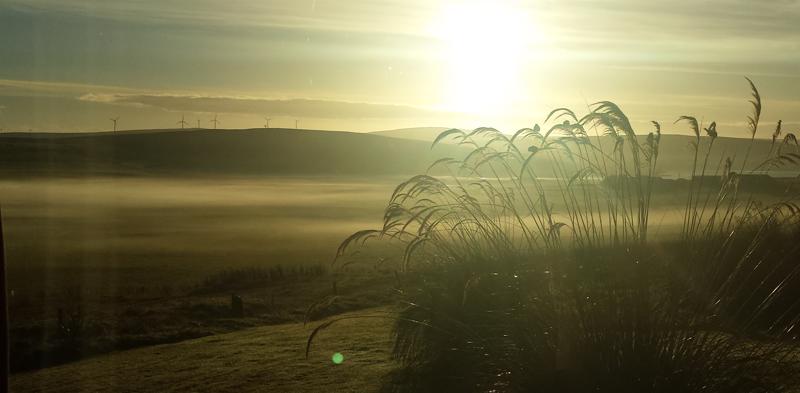
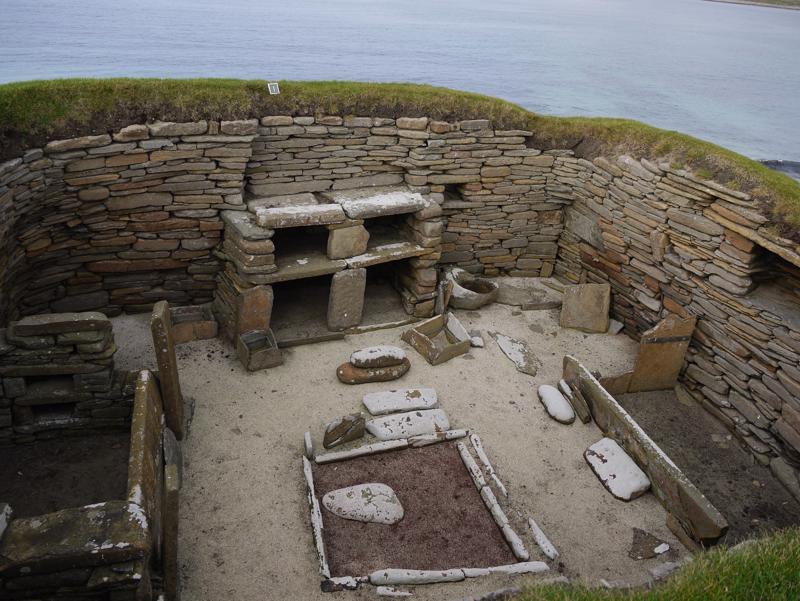

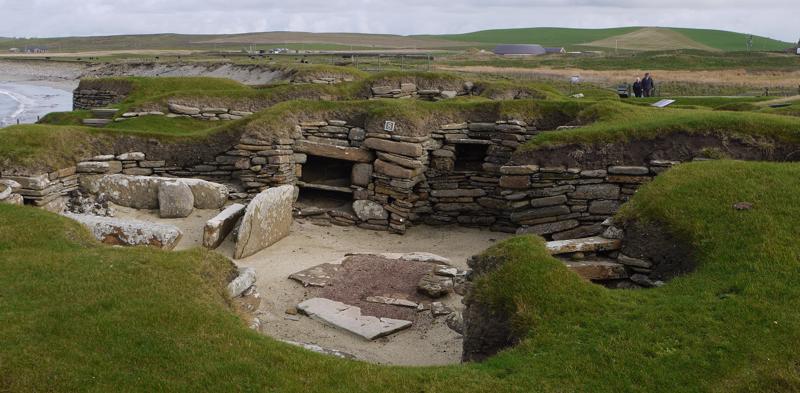
turned out to be an amateur archaeologist, with a very interesting collection of various items in his home. We found a Rune stick, and a bookcase built with a hidden compartment, for storing valuables. At this point we were relic-ed out, and decided to drive to Kirkwall.
The main attraction in Kirkwall is St Magnus Cathedral. A solid, reddish structure, the cathedral is a large collection of archways and memorial plaques, stained glass and floral bosses, dating back to the 1600’s. Originally the cathedral would have stood right on the shoreline. Over time, the ocean has receded several hundred metres, and there is now a strip of shops across the road, where the ocean used to be.
Kirkwall itself is grey. The buildings are a stark, monotone slate colour. I’d heard much about the local jewellery trade in Kirkwall, and was excited to find several shops with locally designed and made silver pieces. It became very clear, very quickly, that these were pieces to admire through glass, unless I was willing to pay more for a single piece than two night’s accommodation would cost. Admire we did, and I now have a little collection of artist cards, to return to when I’m rich and famous. Or at least, employed.
There is a museum in Kirkwall, which displays artefacts from Skara Brae and the Barnhouse sites. We saw countless examples of spear heads, coiled pottery, patterned pottery and other decorative items. After a full day of exploring Skara Brae and Skail House, my brain was beginning to explode with all the information. We called it a day, returning to our caravan for a Mexican hotpot and a tight game of scrabble.

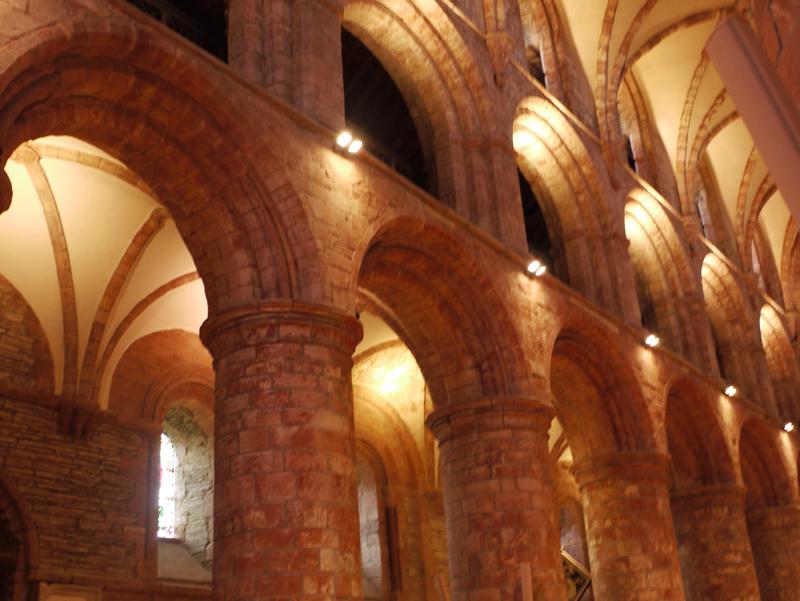
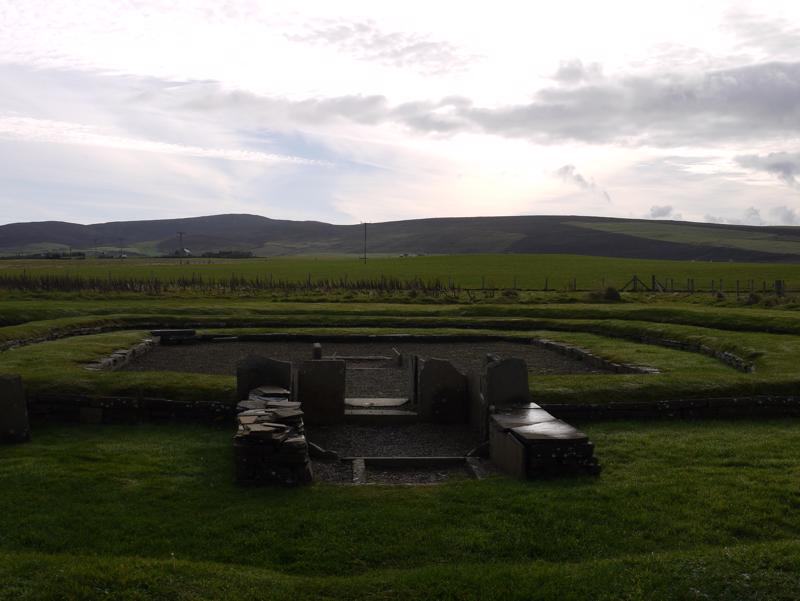

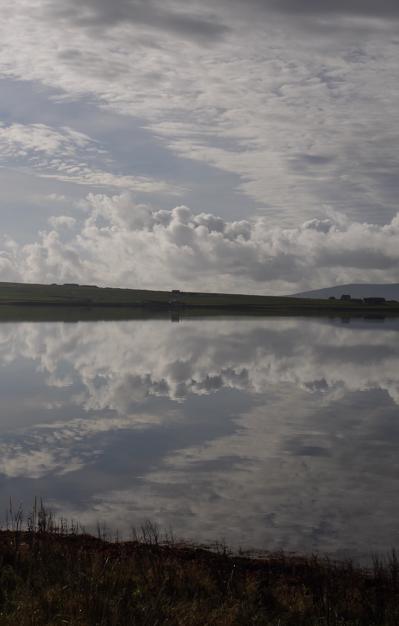
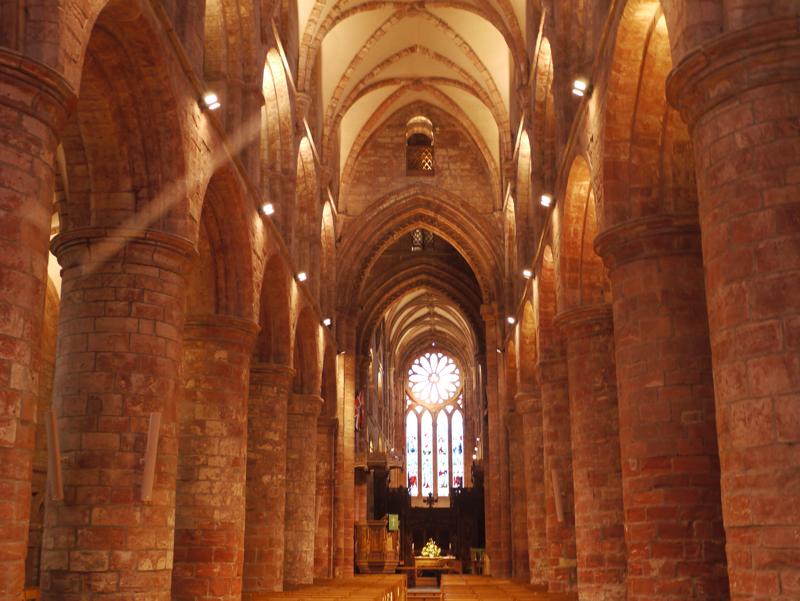
1.
The First Step
2.
The 24 hour jump
3.
12 & 13th July
4.
15th - 17th July
5.
19th & 20th July
6.
21st & 22nd July
7.
23rd - 25th July
8.
27th July
9.
29th & 30th July
10.
July 31st - August 3rd
11.
4th & 5th August
12.
6th & 7th August
13.
9th & 10th August
14.
11th - 13th August
15.
14th & 15th August
16.
16th & 17th August
17.
18th & 19th August
18.
20th & 21st August
19.
22nd & 23rd August
20.
24th & 25th August
21.
26th & 27th August
22.
28th & 29th August
23.
30th August - 21st September
24.
Part II
25.
26th - 30th September
26.
1st - 6th October
27.
7th - 12th October
28.
14th - 16th October
29.
17th & 18th October
30.
19th - 20th October
31.
21st - 24th October
32.
25th - 27th October
33.
29th - 31st October
34.
1st - 10th November
35.
11th - 16th November
36.
Homecoming
Share your travel adventures like this!
Create your own travel blog in one step
Share with friends and family to follow your journey
Easy set up, no technical knowledge needed and unlimited storage!